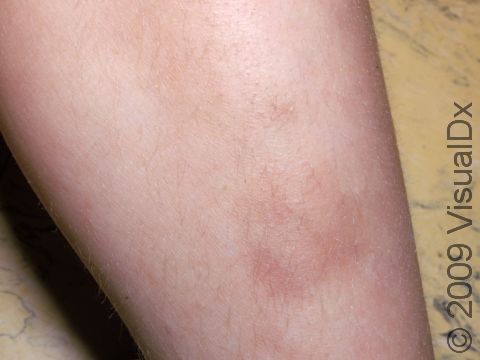Bruises, First Aid
Bruises, also known as contusions or ecchymosis, are dark, discolored areas on the skin that form when blood seeps into surrounding tissue beneath the skin, often due to a bump or injury to the body, where the force crushes small blood vessels but does not break the skin.
Bruises often occur from an accident, fall, sports injury, or medical procedure. Certain factors can make people more prone to bruising, such as older age, some medical conditions, having a family history of bruising, and taking medications that thin the blood or stop clotting.
Bruises can be painful and swollen, or the black, blue, purple, brown, or yellow mark may be the only sign of bleeding under the skin.
Who's At Risk?
Bruises are very common in children who are learning to walk. The skin in young children is thinner, making bruises more obvious. Bruising on the forearms in older adults with a lot of sun damage is also common, particularly if they are taking aspirin or blood thinners. Bruising on the upper leg is particularly common in women.
Bruises that appear for no apparent reason can be a sign of serious illness.
Signs & Symptoms
Bruises are dark, discolored areas on the skin that are sometimes accompanied by swelling. Bruises often appear “black and blue” or blue-green in the early stages and eventually fade to yellow-green as the body breaks down the blood and reabsorbs it, typically over a period of about 10 days. When bruises first occur, they may include red spots or splotches.
Self-Care Guidelines
First Aid Guide
- Apply a cold compress to the affected area to reduce the swelling. Note: Do not put ice directly on the skin. Cold compresses can be applied for 30-60 minutes a day until the bruising subsides.
- If the bruise is on an extremity (eg, arm or leg), raise it above the heart to reduce the flow of blood to the affected area.
- Take acetaminophen (eg, Tylenol) for pain if needed.
Treatments
Your medical professional will treat the trauma that occurred, if necessary. Additionally, testing may be done to check for a blood-clotting problem or blood-related disease.
Visit Urgency
If internal bleeding is suspected, if there is bleeding that cannot be stopped by self-care measures, or if there is serious trauma (eg, a potential spinal cord injury), seek emergency medical care.
If bruises appear for no apparent reason, particularly if you do not have a previous history of bruising; if there is a loss of function (eg, you suspect a broken bone); if you are bleeding elsewhere (particularly from the gums or nose, or you notice blood in stool or urine); or if bruises are large and particularly painful, seek medical care.
Trusted Links
Last modified on August 8th, 2024 at 1:09 pm

Not sure what to look for?
Try our new Rash and Skin Condition Finder

